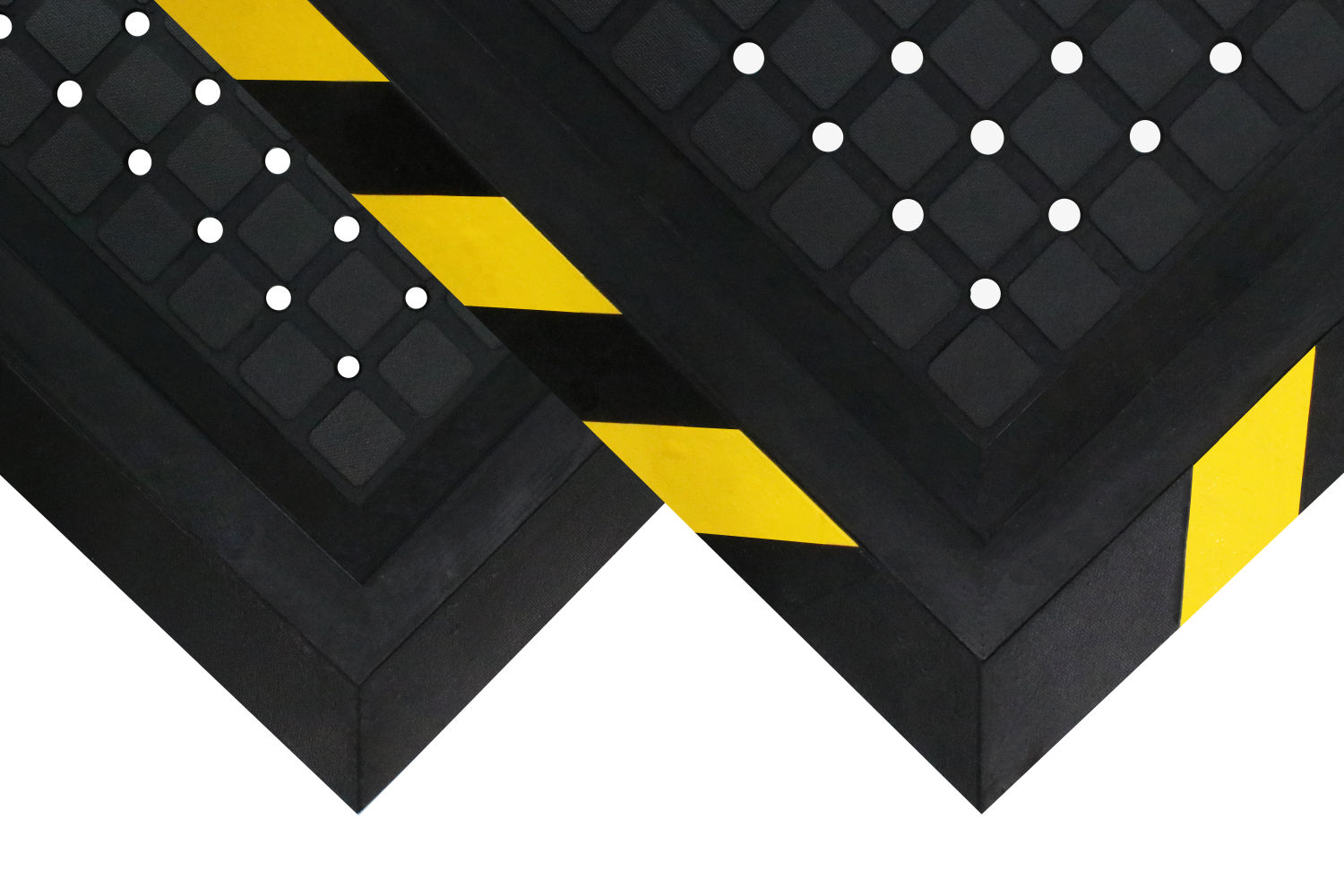
There are regulations and safety standards in place for almost every aspect of a small business, especially when that business provides products or services to the public. In the interest of public safety and for the protection of employees, facility managers may quickly find that there is a significant amount of maintenance required to remain in compliance.
Floor mats tend to fall below the radar, yet they can cause businesses to get dinged with fines and low inspection scores, especially in the food industry, warehouses and medical facilities. Keep reading to learn about floor mat safety standards and regulations for commercial mats to ensure you stay in compliance.
Why Are There Floor Mat Safety Standards?
Like all safety standards, the goal of floor mat regulations is to provide a uniform expectation that is clear and easy to understand for all businesses while protecting both customers and employees. In most cases, the standards are based on common sense, and floor mat safety standards fall into this category. The standards ultimately protect the business, its employees and its customers.
If standards are not upheld, businesses are likely to be sued when employees or customers hurt themselves. Maintaining compliance with the American National Standards Institute and National Floor Safety Institute standards makes good sense.
Who Oversees Floor Mat Safety Standards & Regulations?
The National Floor Safety Institute (NFSI) and the American National Standards Institute both have safety regulations that require business owners to properly maintain commercial floor mats. The U.S. Consumer Product Safety Commission also has a few things to say about what businesses need to provide customers in terms of floor mats and other safety regulations pertaining to flooring. In addition, OSHA gives specific directions about the flooring that is required for the safety and support of employees. Below are the regulations and standards they all outline.
1. Provide Floor Safety Mats
If you do not currently have mats in front of entranceways or thick, supportive mats where employees stand for hours at a time, you need to install them right away. For employees, OSHA requires thick mats that help prevent slipping in the event of a spill. Companies also should provide employees with cushioning to support their backs and feet.
Similarly, the National Floor Safety Institute requires a mat at all entryways to an establishment to protect people who transition from outside to potentially slippery wood or tile flooring. Especially in the event of rain, mats help reduce the risk of falling.
Anywhere there is a potential hazard, a floor mat is required. For example, in kitchens or labs where spills are common, a rubber safety floor mat is needed. It should allow for spills to fall through and also provide support while being non-slip.
2. Keep All Mats Clean & Dry
If mats are wet, sticky or dirty, they will not protect the people walking through nearly as well as they would if the mats were dry and clean. In fact, poorly maintained mats may become a hazard themselves. That’s why regular cleaning of all mats is required. This means a thorough wet wash for rubber mats and laundering for carpets.
3. Make Sure All Floor Mats Are in Good Shape
If rubber floor mats are missing chunks of rubber or have holes or tears, they will not perform optimally and could create a tripping hazard as well.
Similarly, if floor mats are worn down due to heavy use, they can become uneven and no longer provide the kind of support they were designed to offer. Regular inspection and repair of all floor mats are required to ensure they are always clean and functional.
4. All Floor Mats Must Be Sanitary
If regular laundering and cleaning take place, this issue usually isn’t a concern, but it requires emphasis in industries in which floor mats may be exposed to chemicals, food spills or animal or human fluids. For example, in a food processing plant where butchering of animals takes place, floor mats must be sanitized due to the exposure to animal matter.
The type of sanitation and frequency will vary based on the industry. It is usually recommended to clean floor mats immediately if a hazard is created by a spill or associated fumes. Otherwise, clean the mats after every shift.
5. All Floor Mats Must Be Free of Obstruction
If there is anything on a floor mat that someone might have to step over, potentially creating a tripping or injury hazard, that obstruction must be removed immediately. For example, all loose boards, anything sharp or poking up or substances like snow or ice must be removed from floor mats immediately.
Additionally, there always should be easy access to and from required workspace floor mats. If they aren’t accessible, they are not as usable as they need to be and won’t provide the protection required.
Bottom Line: Maintain Compliance With All Floor Mat Standards & Regulations
When it comes to flooring, the rules are generally straightforward. Make sure you have mats, keep them clean and dry and replace them as needed.
At Alsco, we can help you with those expectations by providing facility services that keep you covered. First, we provide the required floor mats so you always have them where they are needed. Next, we pick them up regularly to launder them so they are always clean. Then we offer regular deliveries of sanitation and cleaning products so you always have the right solvents and solutions to keep your floor mats and facilities clean and sanitary.
When your floor mats begin to degrade due to wear and tear, or if there is an accident that causes the floor mats to be damaged, we replace them. All of this happens automatically in the background while you turn your attention to other aspects of your job.
If you’re interested in learning how Alsco can help you comply with floor mat regulations and standards, contact us today. We are ready to help.
